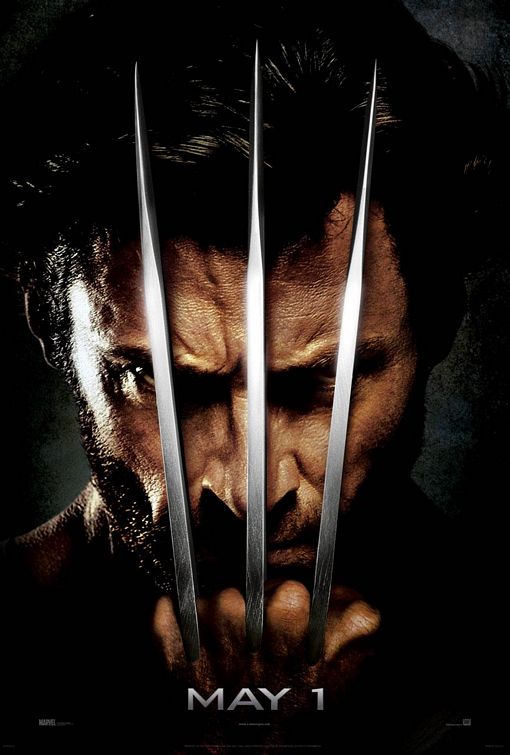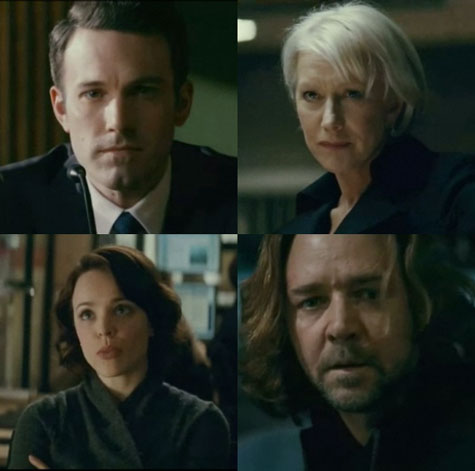
In 1985, Alan Moore’s “Watchmen” deconstructed and analyzed superheroes, setting a new bar that has never been subsequently surpassed and laying the groundwork for the last two and a half decades of comic books. Now, Zack Snyder has managed to tap into that power, deftly adapting the genius that is “Watchmen” into a movie as brilliantly stylized as it is thematically relevant in a time where costumed heroes are inundating the silver screen. Brilliant as it is, no such thing as a perfect adaptation exists, a rule to which Watchmen is no exception. To the uninitiated, Zack Snyder’s Watchmen is a stroke of genius; to the initiated, it remains a work of genius, but one with by my count, seven major deviations from Alan Moore’s vision.
Never before or since have superheroes, masked vigilantes or crime fighters been looked at as in Watchmen, the graphic novel or the movie. Few if any other comic books or comic book films are as violent, as gritty, or as sexually explicit. No other work manages to be as deeply thought out or reflective on its genre or the society that spawned it, revealing the world we live in for all its failings. Virtually any subsequent comic book you see with those elements was almost certainly inspired by “Watchmen.”
While all comic books try to tie in superheroes to our reality to a greater or lesser degree, Watchmen picks out various moments in history starting in the thirties and inserts these men and women of skill, power and more often than not, psychosis and personality disorders into the forces of history. Such events include the Cold War, JFK’s assassination, U.S. involvement in Vietnam, Watergate, and the Soviet Union’s war in Afghanistan.
Each of the so-called Watchmen is a deeply flawed individual far more a product of the cold and dreary world around them than they are a shaper of it. The story starts with the murder of The Comedian, played by Jeffrey Dean Morgan, who somehow manages to make a cold blooded murderer empathetic. Investigating his death is the only truly active crime fighter of the story, Jackie Earle Haley’s Rorschach, a wonderfully psychotic and powerfully compelling sociopath with no compunctions against fighting cops or killing criminals.
Much of the film is told in flashbacks as each of the characters reflects on their relationship with The Comedian. Patrick Wilson plays the Batman-like Nite Owl. The film’s resident super-genius is Matthew Goode’s Adrian Veidt, a man who has used his past as the costumed hero Ozymandias to amass a vast personal fortune, and Malin Akerman’s Silk Spectre, a woman emblematic of the over-sexualization and loose morality of 1980s America. Unlike most such movies, only one character in all of Watchmen actually has any superpowers, Billy Crudup’s Dr. Manhattan, a glowing blue god-like being who can see the future and manipulate matter on a molecular level.
Together, the Watchmen weave a story that cannot be confused for The Dark Knight, Spider-Man, or any other superhero film. Snyder brings his unique style of brilliant musical overlays and compellingly stylized slow motion choreography to an impossibly layered story and manages to be largely faithful to the original without confusing viewers. The opening montage wraps audiences in a cocoon of this alternate universe, surrounding them with the notion of costumed heroes in our reality, altering our history and changing our relationship to the universe.
Compelling as the fight scenes are, Watchmen is not an action story nor even in the truest sense a drama. It is an exploration, a whirlwind of energy and emotion. It is the accumulated magic and mayhem of men in masks, fighting the good fight, gallivanting around for their own aggrandizement or just trying to find where men who dress up in tights and set out to fight crime actually fit into the larger world.
For the record, I own a signed copy of the graphic novel, one I obtained from the living legend himself, in person. I am a geek and a fan. Like the vast majority of my brethren, I hail “Watchmen” as the greatest graphic novel of all time and Alan Moore as the greatest comic book writer ever and on the short list of the greatest writers of the 20th century. Moore is an entity unto himself, a genius of vast artistic vision whose abilities have made him a social recluse. As normal as he may speak, there is an unidentifiable inner energy to the man that belies a deep rooted anger at Hollywood for what he sees as perversions of his work. Moore has vowed never to watch a single movie based off his work, lambasting Hollywood and telling anyone who will listen that every single adaptation of his graphic novels is sheer and utter garbage.
Some of the adaptations of Moore’s work have in fact been atrocious as he claims, namely The League of Extraordinary Gentlemen. Most adaptations of his work however, have taken liberties while remaining essentially true to Moore’s vision, whether he acknowledges it or not.
When it comes to Watchmen itself, Moore and his most devoted fans will see in the liberties taken by Zack Snyder a sacrilege. Those who have not read the graphic novel or those who understand that a perfect adaptation to screen from any form is impossible will see in Watchmen one of the closest adaptations humanly possible, a vision that could have come only from a deeply rooted fan like Snyder. I truthfully do not think anyone else could have done a better job with Watchmen. In terms of loyal fans of comicdom with acting chops sufficient for a project of this magnitude, Snyder is at the very top of the list.
Close as Watchmen is to its source material, the liberties taken do run a high risk of alienating fans of the graphic novel. The important part is to remember that any adaptation is going to involve some level of artistic license and realize how much Snyder got right instead of how much he changed. There can be no doubt that there is far more of the former than there is of the latter. The moral ambiguity, gritty and sexual undertones, gruesome violence and a more real feel for superheroes than any other story is all there. Zack Snyder truly does watch the watchmen, finding in it a film that is compelling, energetic and incredibly fun even as it is deeply reflective and intellectual.
For its energy and its largely faithful adherence to its source material, I adamantly endorse Watchmen as a beacon that once in a while at least, Hollywood can still turn brilliant source material into a brilliant movie.










